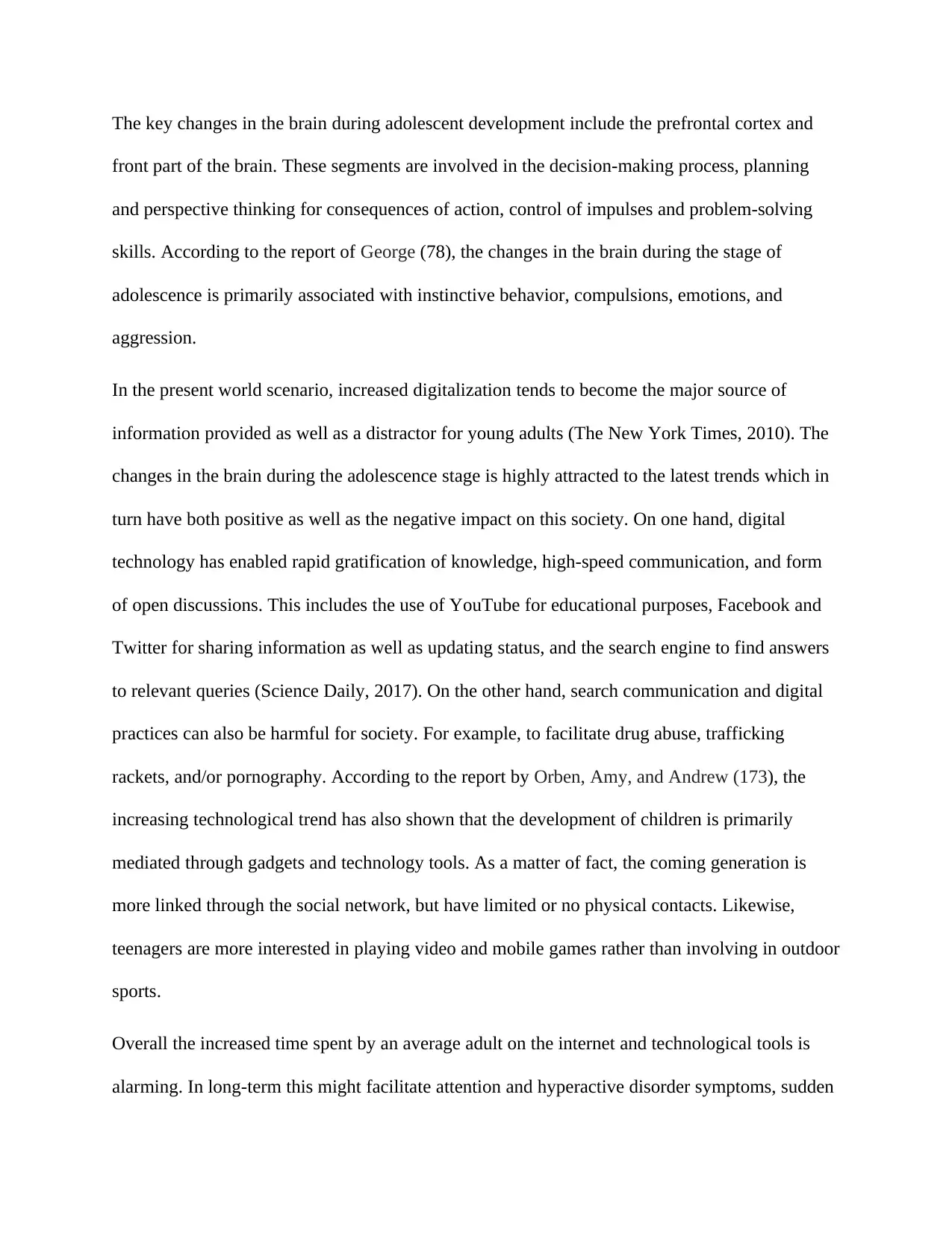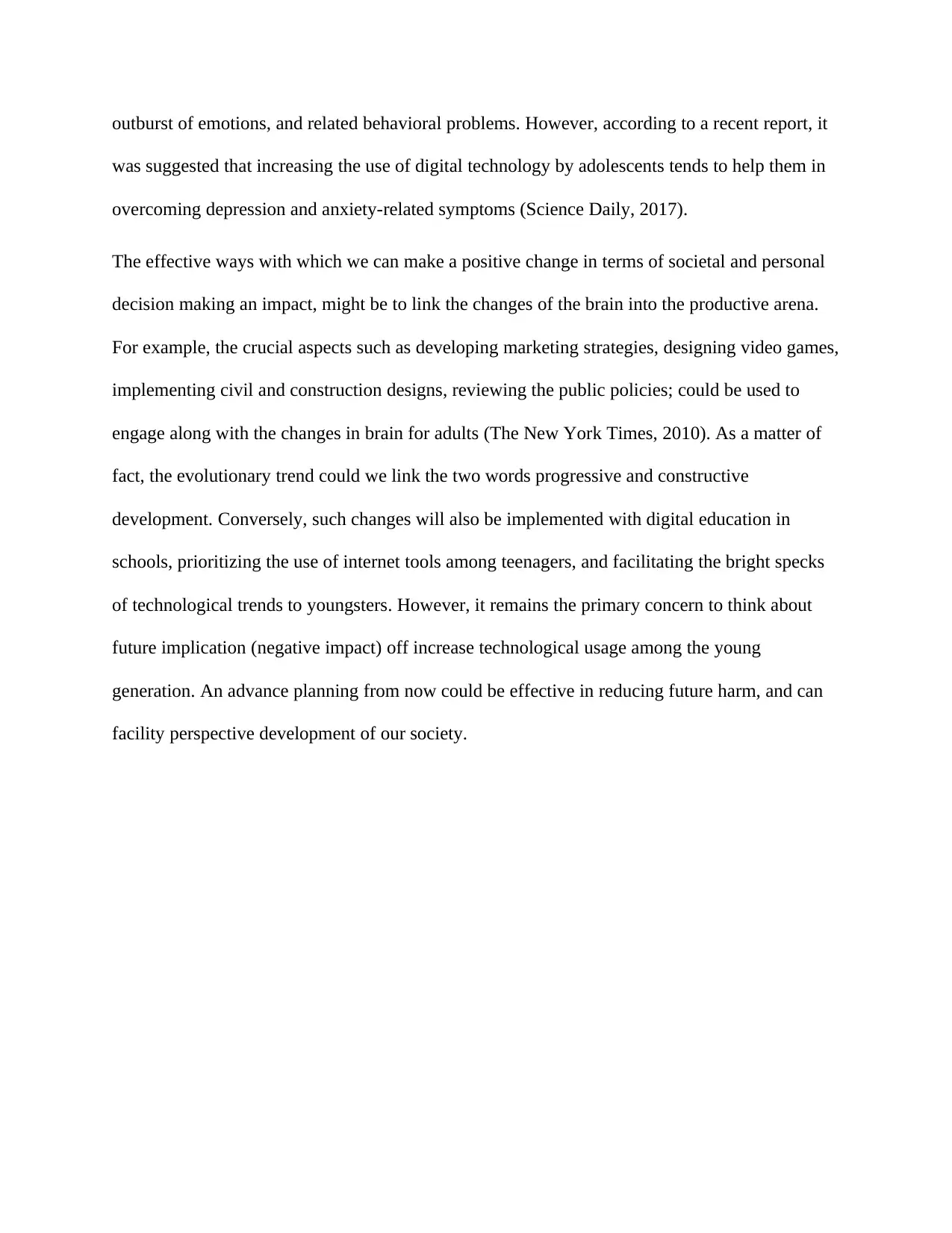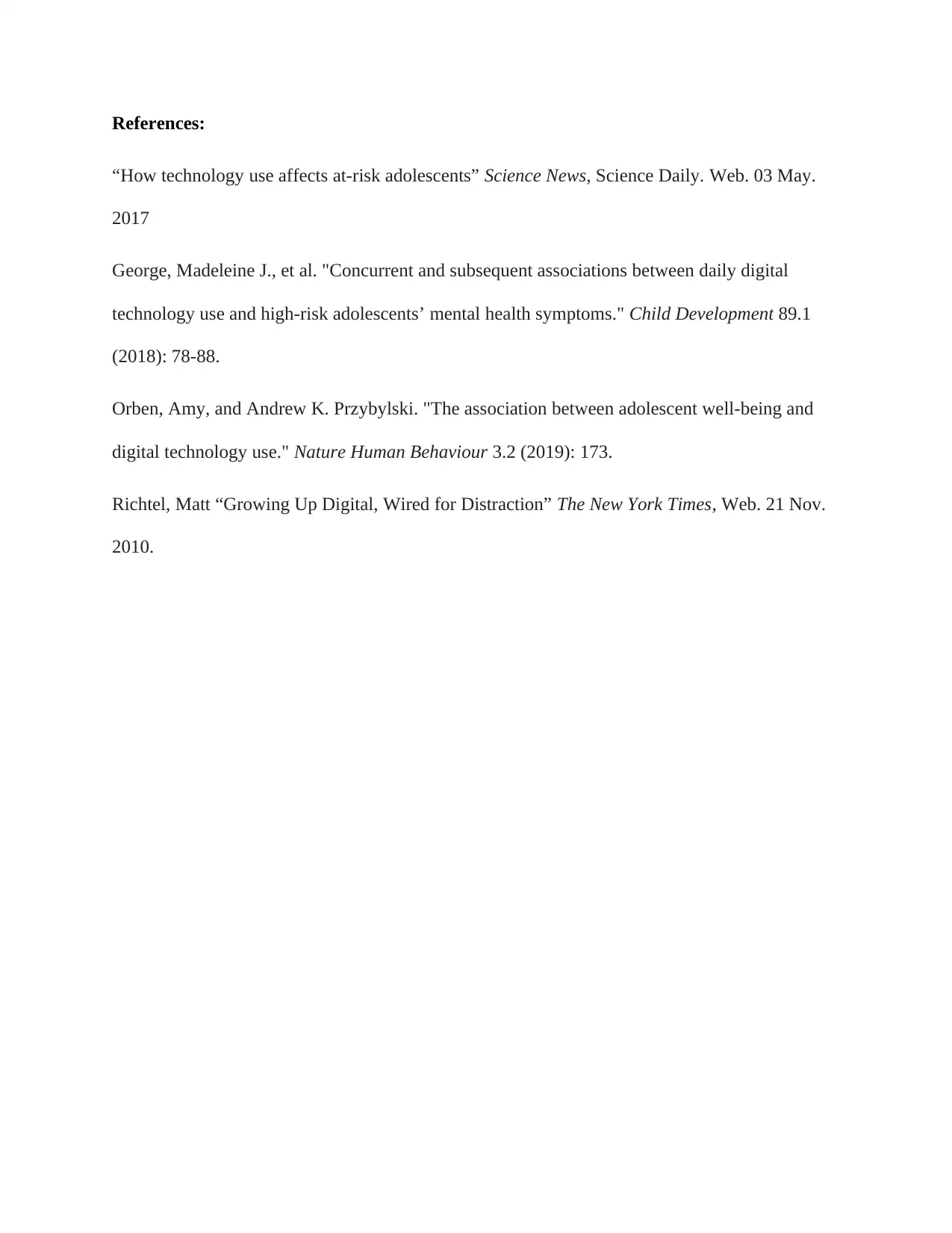The Adolescent Brain: Decision-Making, Social Impact, and Technology
VerifiedAdded on 2022/08/12
|3
|691
|129
Essay
AI Summary
This essay examines the key changes in the adolescent brain, particularly focusing on the prefrontal cortex and its role in decision-making, impulse control, and problem-solving. It discusses the influence of digital technology on adolescents, highlighting both its positive aspects, such as access to information and communication, and its potential negative impacts, including attention disorders and behavioral problems. The essay references studies that explore the relationship between technology use, mental health, and societal implications. It concludes by suggesting ways to leverage brain changes for productive outcomes and emphasizing the importance of planning for the future to mitigate the negative effects of increased technology use among young people. The essay incorporates references to support its arguments, providing a comprehensive analysis of adolescent brain development and its societal impact.
1 out of 3







![[object Object]](/_next/static/media/star-bottom.7253800d.svg)